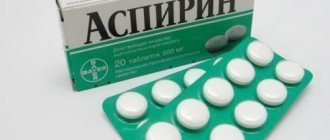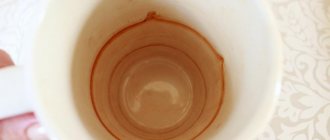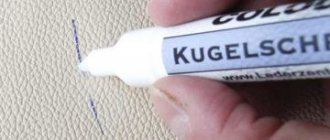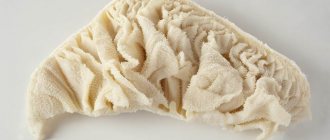In the rhythm of life in modern society, most people start their day with a cup of strong, invigorating coffee. They drink it everywhere: at home, on the road, in the subway, in the car, in snack bars, at work. In the morning, “Coffee to go” is more common than donuts or hamburgers. But no one is immune from unpleasant situations. Colliding with a passerby, being distracted by people passing by, looking at your phone or dozing off on the train has become commonplace. We will figure out how to preserve your favorite things and remove coffee stains in such cases.
General procedure
A dried, soaked coffee stain is almost impossible to remove. The washability scale is approximately as follows:
- 0-15 minutes: just rinse the fabric generously with warm water, for example, place it under a running tap;
- ¼-3 hours: the usual stain removers are effective, including a bar of laundry soap, as well as a solution of ammonia (1:1), glycerin (a few drops) or borax (a few drops);
- 3-72 hours: Soaking, powerful bleaches, etc. will be required.
- 7 days or longer - some fabrics will only need to be re-dyed or thrown away.
Fresh spots
What to do when a stain has been planted:
- Blot dry with a napkin. You cannot rub, otherwise the stain will be absorbed even more into the material.
- Wash the area where the stain was.
- If this is not possible, sprinkle with salt.
- Wash the entire item, adding stain remover.
Old stains
It is difficult to deal with old stains, but it is possible.
General procedure:
- Pour hot water or soak in it.
- Apply stain remover locally.
- Rinse off.
- Wash as usual.
Boiling water and hot water
Of course, ideally you need to soak the item immediately after a coffee stain has formed, but this is not always feasible. But you will most likely succeed in exposing only the stained area under a stream of hot or warm water: keep the stain under the stream until it is washed out. If the stain is not completely gone, sprinkle it with salt and use one of the methods listed below at home.
To easily wash off dried coffee, pour boiling water over it: slowly pour hot water from the kettle onto the stain, and then wash as usual.
Advice
Please note that boiling water can only be used on cotton or linen, as it can damage wool, silk and synthetics.
Features of working with different types of fabric
Depending on what material you spilled coffee on, methods for cleaning it are also chosen. The product you want to remove the stain with should first be tested on a small area.
Coarse cotton fabrics and linen
Bed linen made of thick cotton calico or a sundress made of linen can withstand most methods and are not afraid of high temperatures. However, boiling, bleach and concentrated acids severely damage the fibers.
It should also be remembered that natural fabrics with a small fluff (with weak twisting of threads and fibers) quickly and abundantly absorb liquids and are difficult to rinse. Chlorine-containing bleaches and products with strong odors are not recommended.
Denim
Denim fabric is quite durable and dye-fast, however, in hot water it shrinks strongly and loses color. Modern jeans contain elastane, so they require delicate solutions.
Colored knitwear
Almost all second-layer children's clothing is cotton jersey with a small amount of elastane. The same is used on T-shirts, tops, pajamas, adult walking T-shirts, robes, socks, etc.
Matter can be shed 1-1.5 tbsp. hot water, there will be no harm. However, washing or soaking in water hotter than 45 degrees will destroy the color and probably the print. Hydrogen peroxide, chlorine-containing bleaches, and a mixture of vinegar + soda + powder are contraindicated.
Tip To fix the color after all procedures, add 1 tbsp. l. vinegar before the final rinse. There will be practically no smell due to the low concentration of the substance. But the color will last longer.
Satin, silk, wool
Silk and wool do not tolerate contact with citric and oxalic acids, vinegar, and hydrogen peroxide. Silk, in addition, is afraid of hot water. Wool - long soaking.
Artificial fabrics
Artificial fabrics should not be cleaned with solvents, spilled with boiling water or soaked in hot water. Also, synthetics will not like contact with ammonia.
Suede
The material does not hold paint well, and the structure of the pile is very sensitive, so it is forbidden to wet suede too much, or to scrub it with aggressive agents. It is best to use vinegar or foam from dishwashing detergent.
Leather
The material does not tolerate an abundance of water, so semi-dry or wet methods are used: using gels or liquid products sprayed from a spray bottle (for example, vinegar). Then you need to restore the shine to the skin using glycerin.
How to Remove Old Coffee Stains
To get rid of coffee stains that were left several weeks or months ago, you can use:
- A mixture of water with glycerin or borax. Soak the stained area with the solution for at least 30 minutes.
- Old stains are removed from white natural fabrics using hydrogen peroxide.
- Ammonia is good for removing marks on synthetics. Moisten the affected area with ammonia and leave for 20 minutes.
- Using warm glycerin you can remove old coffee stains from wool, plush or carpeting.
Household chemicals
Laundry soap:
- For better results, rub the soap.
- Dilute with water to form a paste.
- Cover the coffee stain with the mixture.
- After half an hour, wash it off.
- If necessary, repeat the procedure.
Suitable for all fabrics and any stains; against old marks, soak in a concentrated solution. Soap is ideal for removing coffee from jeans.
Foam from dishwashing gel:
- The product is stirred in warm water and foamed.
- Use a dry sponge to pick up the foam and apply it to the stain.
- Blot or lightly wipe (if we are talking about leather or leatherette).
- Remove residues with a dry soft cloth.
The method is applicable against fresh stains on leather, leatherette, eco-leather and furniture upholstery.
Dishwashing liquid:
- The liquid is poured onto the fabric.
- Gently rub into the dirty area.
- Leave for 15 minutes.
- Wash off with warm water.
“Fairy”, “AOC”, etc. Removes fresh coffee stains well. The method is preferable if the drink was with milk or cream.
Window cleaning liquid with ammonia containing:
- Moisten the coffee stain with the product.
- Rub with a dry cloth.
- Wash with warm water and soap.
This product works great on stains on white clothes.
Bleach:
- Rub the stain with soap.
- After 10 minutes, rinse and soak in water with bleach.
- After an hour, rinse.
Used for white materials. Best brands:
- Amway,
- BOS,
- Ecover,
- Antipyatin.
Stain remover:
- Blot (but do not rub) the stain with a tissue to remove excess liquid.
- Rinse with hot water (but not boiling water!) from the wrong side.
- Treat the mark with stain remover. Before doing this, you can rub it with laundry soap.
- Then wash the item.
- If a trace still remains, reapply the product.
Stain removers are effective on fresh stains.
Radical measures: bleaching and boiling
Bleaching, like boiling, applies only to white linen and cotton:
- Water is heated in a large container to fit the item completely.
- Add bleach, laundry soap shavings or washing powder to warm water.
- After boiling, leave the product in the water for half an hour to two hours, depending on the contamination.
- After cooling, rinse the item in cool water.
You can remove coffee stains from any type of fabric. It is only important to use detergents correctly. Don’t rush to say goodbye to your favorite blouse or jeans, because you can solve this problem.
Vinegar
A mixture of equal parts vinegar, water and washing powder applied to a stain can help wash even very heavily soiled items. Apply the solution to the stain, wait 5-10 minutes and rinse the product thoroughly. It is also convenient to use a solution of vinegar and water (1:1) to treat a stained sofa or carpet of any color.
Advice
If the product (for example, a sofa or carpet) cannot be placed under running water, try to remove as much coffee from the pile or upholstery as possible with napkins. This will greatly facilitate further manipulation of the stain.
So don’t rush to throw away a damaged item: even dried coffee can be washed off from any product if you know truly proven products!
Tips for removing stains
The main rule when cleaning coffee-stained items is to try to wash the fabric immediately. First, rub the stain, sprinkle it with regular salt, and then wash it off. If you spill coffee on your clothes in the morning, when you don’t have time, you can soak the item in salt water and wash it in the evening.
Do you wash by hand?
Oh yes! No
Old dried traces of coffee can only be removed the second or third time after thorough soaking and brushing. This procedure can be carried out using both stain removers and simple improvised means.
Spilled coffee
Dry cleaning of sneakers
Dry cleaning white sneakers.
For several seasons now, white sneakers have remained the main must-have in the wardrobe of every fashionista. However, such shoes get dirty very quickly, and frequent machine washing can render the sneakers unusable. Hydrogen peroxide and soda will help restore white shoes to cleanliness. First, generously splash peroxide on the insole; it will begin to foam and quickly push dirt to the surface. To clean the outside of your sneakers, mix a small amount of baking soda with peroxide to form a homogeneous paste, apply the mixture to a brush and scrub the surface thoroughly.
What can I do to restore the color of my clothes?
Have your black clothes taken on a faded, washed-out look? It doesn’t matter, you can restore the brightness of colors in several ways.
Coffee
Cooking process:
- brew strong coffee (for one liter of water you need to take 150 grams of ground coffee);
- filter the drink and leave to cool to room temperature;
- Dip a black item into the resulting solution and leave for ten to fifteen minutes.
Natural coffee not only refreshes and restores the brightness of black color, but also gives clothes a pleasant aroma.
Treatment with coffee drink is carried out only on washed and dried items.
Tobacco infusion
The procedure includes the following steps:
- bring water to a boil, add dry tobacco leaves at the rate of 15g per liter of water;
- Boil the infusion for thirty minutes, then strain and cool to room temperature;
- Dip black things into the resulting solution and leave for at least ten to fifteen minutes.
An additional rinse in cold water with the addition of conditioner will help get rid of the strong tobacco smell.
Salt and soda
Algorithm of actions:
- prepare a solution of salt, soda and water (the ingredients are mixed in equal proportions);
- Dip already washed black clothes into the resulting composition and leave for thirty minutes;
- Afterwards, rinse the product in clean water and hang it out to dry.
Vinegar
The instructions are as follows:
- prepare vinegar water - to do this, mix water and vinegar in a 1:1 ratio;
- We immerse pre-washed clothes in vinegar water and leave for at least thirty minutes.
The vinegar treatment is carried out immediately after washing and the main rinse, without waiting for the clothes to dry.
Chemical dyes
Special paints for clothing can be purchased at any hardware store.
The main thing is to carefully study the manufacturer’s information regarding the type of fabric dyed and do not forget to use rubber gloves. Algorithm of actions:
- The dye is diluted in enamel or glass containers (the manufacturer indicates full information about the method of diluting the paint on the label);
- dip the product in the paint and wait for the required time (also indicated by the manufacturer on the label).
It's not worth saving. The use of cheap, low-quality paint can cause final damage to the product.
If you need to paint several black things, then you need to dip them in the paint one by one. Co-dying is a common cause of streaks and uneven coloring of fabric.
How to wash black clothes
Before moving directly to washing, it is worth deciding on the tools. Many people, out of laziness, use ordinary powders intended for colored laundry to wash black clothes. Unfortunately, the composition of such a powder is merciless to black and mercilessly washes the dye out of the fibers, which over time leads to the appearance of whitish spots.
Don’t be too lazy to buy a special powder, or better yet, a gel (it washes out easier and doesn’t leave streaks on black) for washing black clothes. This is a sure way to extend the life of your favorite clothes.
How to wash knitwear: 8 simple rules
Leather Products
If you spill coffee on your favorite bag or jacket, then get ready to wipe it with gasoline or turpentine. The main thing is not to overdo it, otherwise you will dry out the product and it will begin to crack. After cleaning, soak the fabric with castor oil or shoe polish. If you have special care products, then use them! You need to moisturize your skin as much as possible after such work.
To remove coffee stains from suede, all you need is a simple soap solution and a soft sponge. After applying the solution, give it time to sit on the fabric and then carefully clean off the stain. If someone advises you to clean your suede with a greasy gel, send the person to hell! This will only make things worse.











